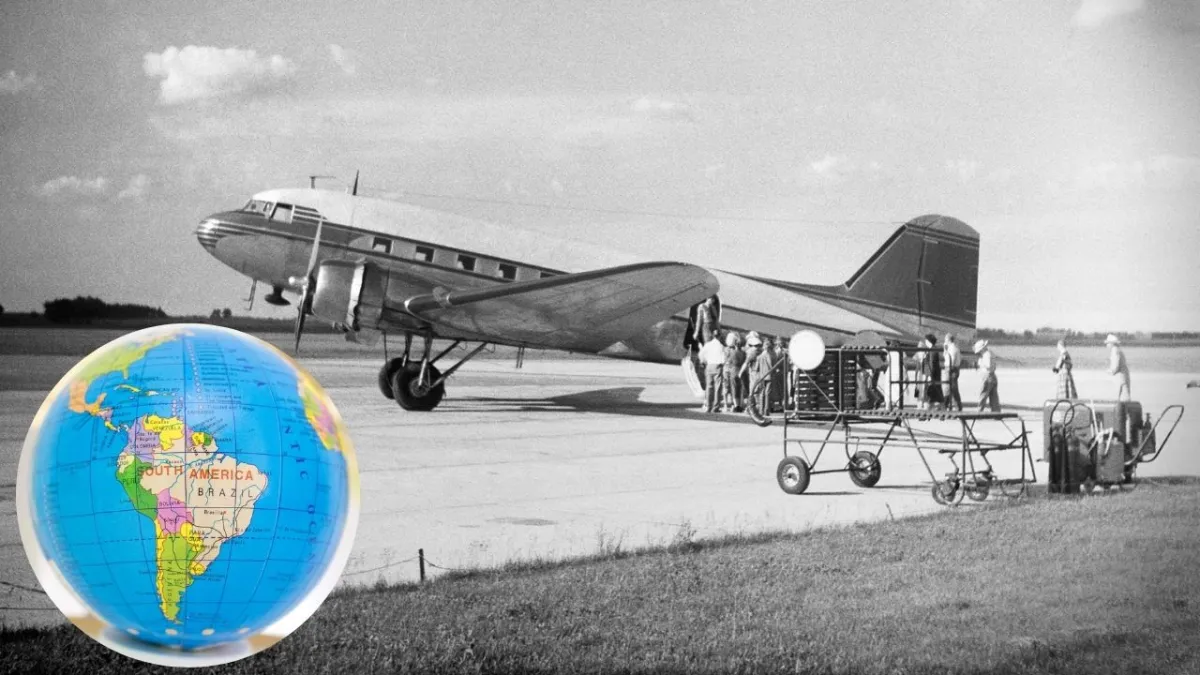
British South American Airways Flight CS59, known as “Stardust,” is one of aviation’s most intriguing mysteries. This plane disappeared on August 2, 1947 in the region of the Tupungato volcano, on the border between Argentina and Chile, and was not found until more than half a century later. The story of this flight has captured the imagination of many due to the enigmatic circumstances of its disappearance and the long time it took to solve the mystery.
>>> We recommend: Neither atomic bomb nor tsunami: tragedy with the most deaths on Earth occurred for another reason
British South American Airways flight CS59 took off from London Heathrow Airport on July 30, 1947, with its final destination in Santiago, Chile. The aircraft, an Avro 691 Lancastrian, had a crew of five and six passengers.
Getty Images
Stardust passengers
These would be the passengers that the aircraft had on board, according to historical data:
- Peter Young: British diplomat who worked at the British embassy in Santiago, Chile.
- Paul Simpson: civil servant and polyglot.
- Martha Limpert: German citizen.
- Casis Said Atalah: 47-year-old Palestinian returning home to Santiago, Chile after visiting his dying mother in Palestine.
- Jack Gooderham: 42-year-old British businessman, traveling with Harald Pagh.
- Harald Pagh: Danish citizen, traveling with Jack Gooderham.
The crew would be composed of:
- Reginald James Cook: captain
- Donald Checklin: copiloto
- Dennis Harmer: the flight’s radio navigator.
- Iris Adams: the flight attendant, who was also responsible for the safety and well-being of the passengers during the flight.
After making stops at Ascension Island and Buenos Aires, the flight took off from Morón, Argentina, on August 2, 1947, for its final leg to Santiago, Chile.
>>> See also: What would happen if the Nevado del Ruiz volcano erupts? These would be the effects
Mysterious disappearance of flight CS59
At 5:41 p.m., the plane sent a message to the control tower at Los Cerrillos airport in Santiago, indicating that it would arrive in approximately four minutes. However, after this message, the aircraft disappeared without a trace. There was no further radio contact or distress signals, triggering an immediate search that failed to find any trace of the plane.
The Mystery of “Stendec”
The last message sent by the plane included the word “STENDEC”, which has been the subject of numerous speculations and theories over the years. Some suggested it could be a code or distress signal, while others thought it could be related to a technical glitch or human error. The lack of a clear explanation for this word contributed to the mystery of flight CS59.
For more than 50 years, the disappearance of flight CS59 gave rise to numerous theories and speculation. Some of the most popular theories included the possibility of sabotage, an attack, or even the intervention of extraterrestrials. The presence of a British diplomat among the passengers and the political tensions of the time also fueled conspiracy theories.
It was not until 1998 that the remains of Stardust were finally discovered on the glacier of the Tupungato volcano, at an altitude of 4,724 meters. A team of Argentine mountaineers found fragments of the plane, allowing investigators to reconstruct the events that led to the crash. It was determined that the plane had hit the volcano due to a navigation error, possibly caused by adverse weather conditions and the lack of accurate navigation technology at the time.

Getty Images
How is the mystery of flight CS59 solved?
The discovery of the plane’s wreckage allowed investigators to close the case and provide answers to the families of the passengers and crew. It was concluded that the plane had flown in low visibility conditions and had collided with the Tupungato volcano, disintegrating upon impact and becoming buried in the glacier. A combination of factors such as lack of advanced navigation technology, weather conditions and mountainous terrain contributed to the accident.
Source: https://www.noticiascaracol.com/mundo/teorias-sobre-avion-que-desaparecio-por-mas-de-50-anos-atentado-extraterrestres-sabotaje-so35


